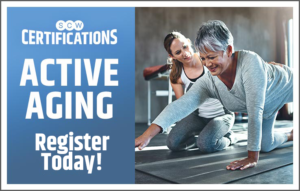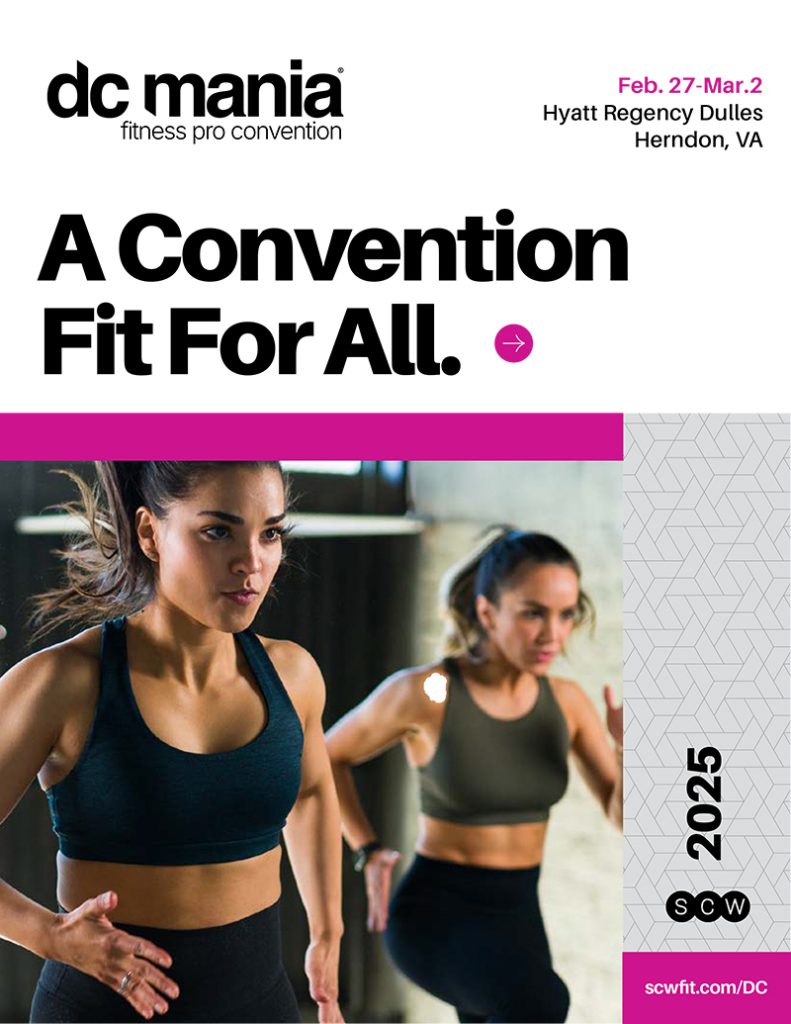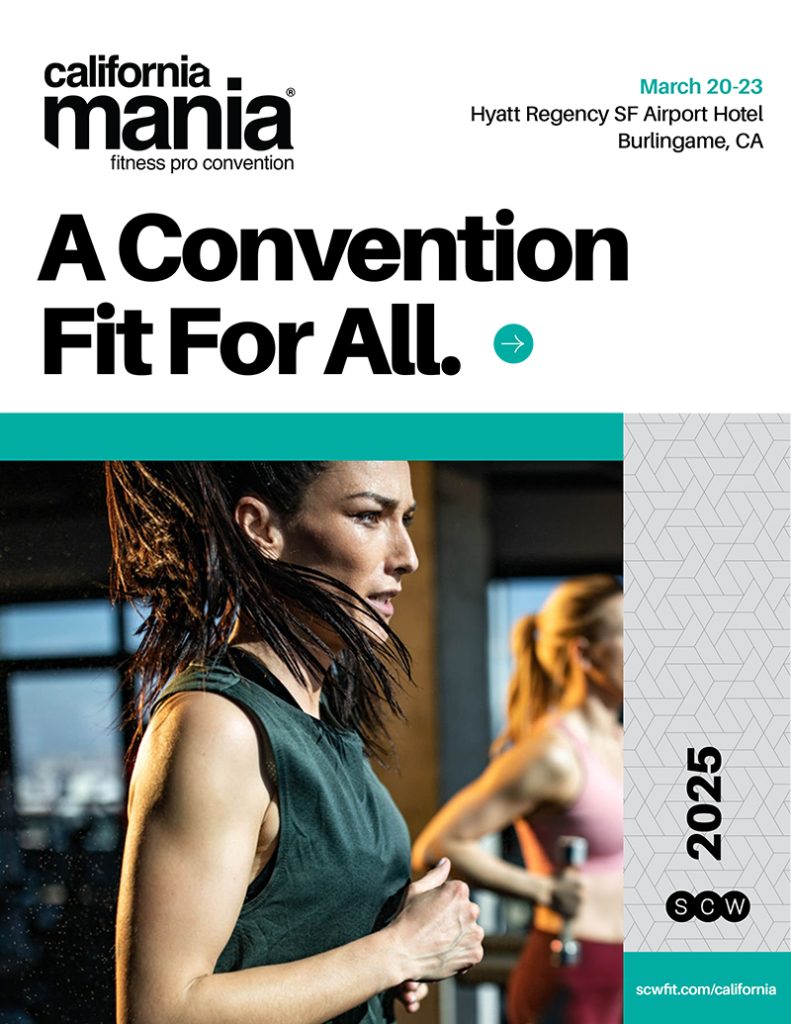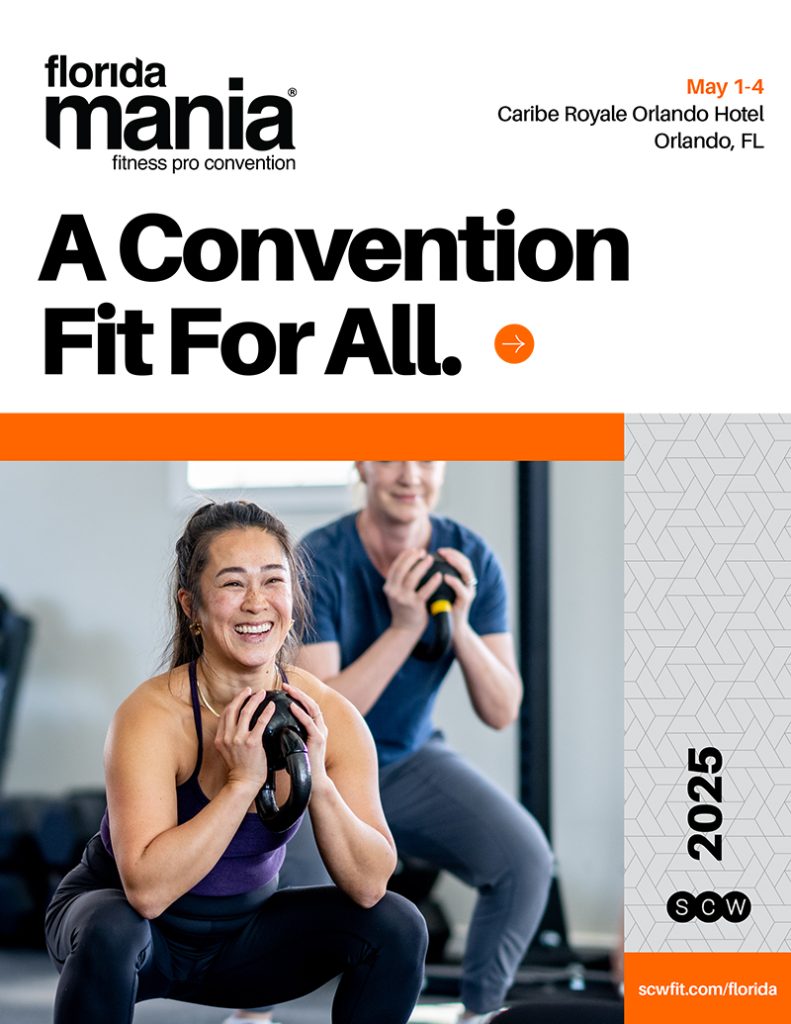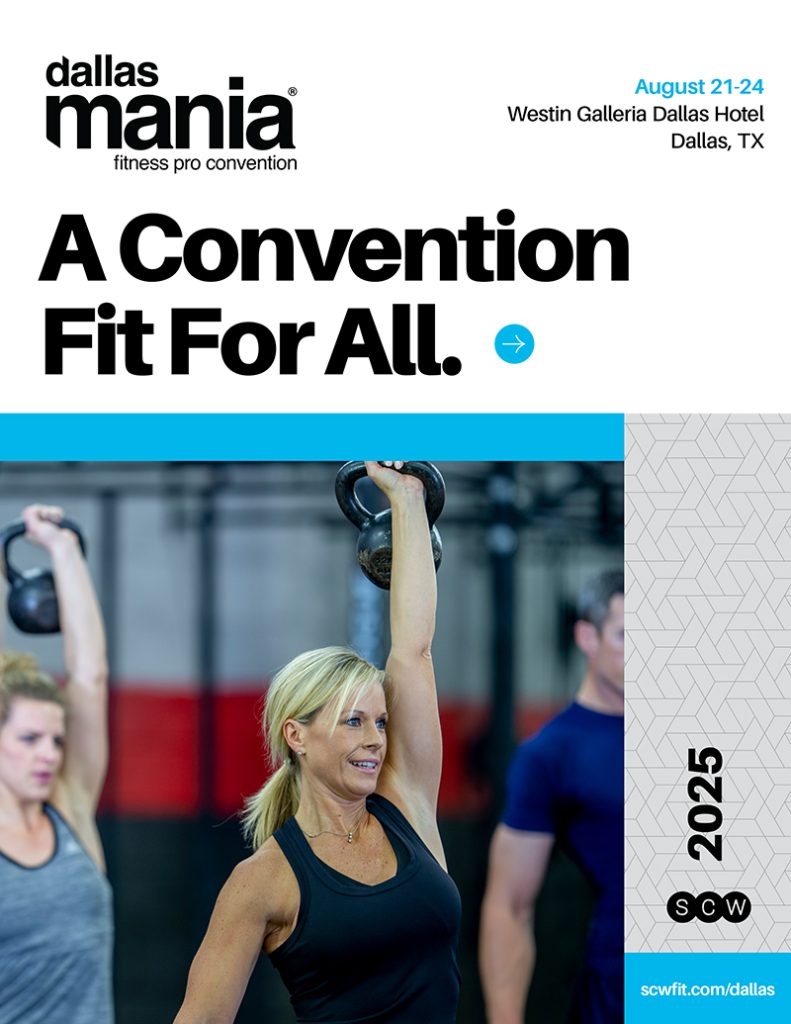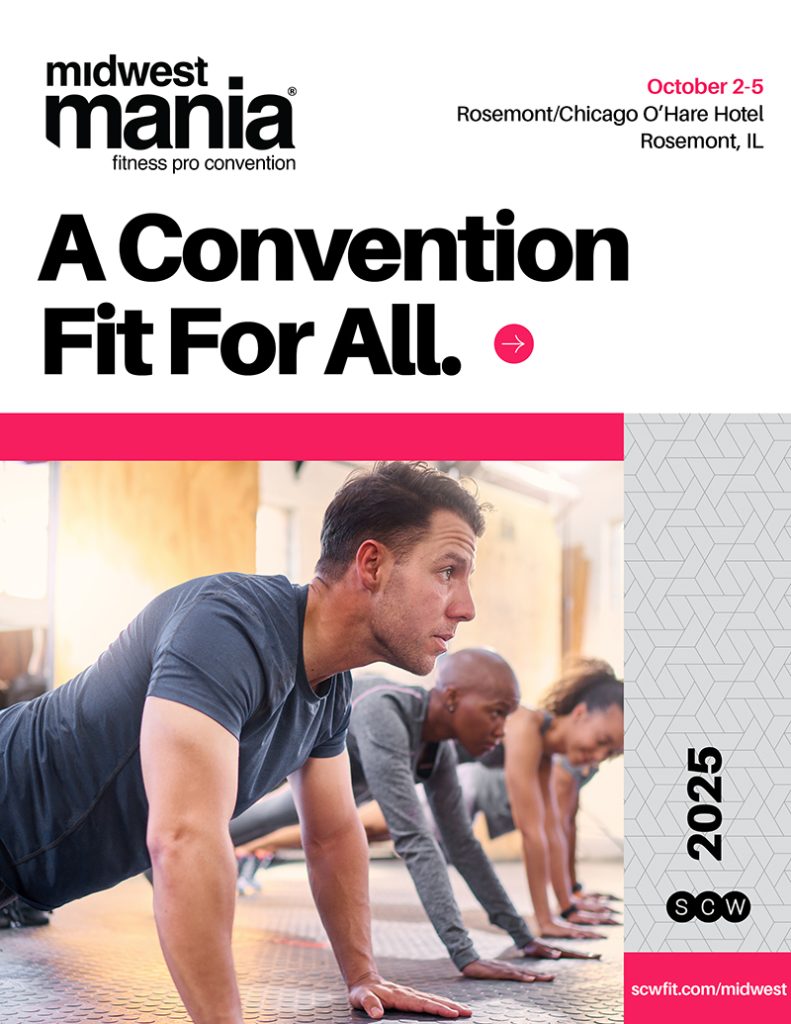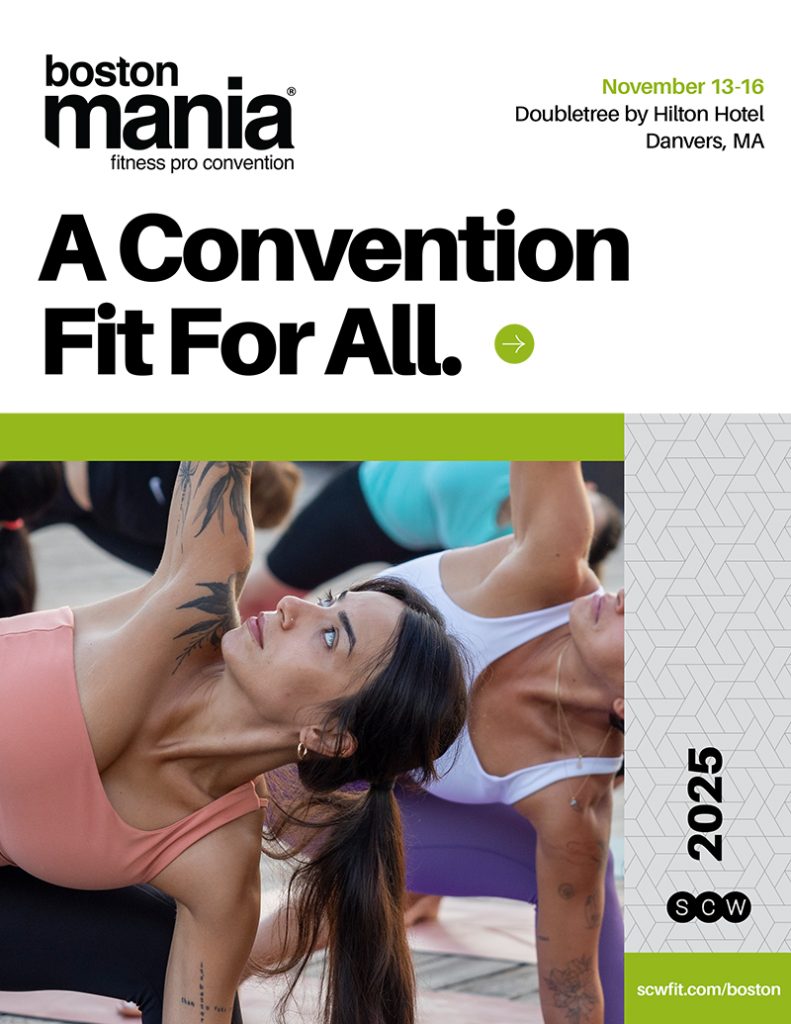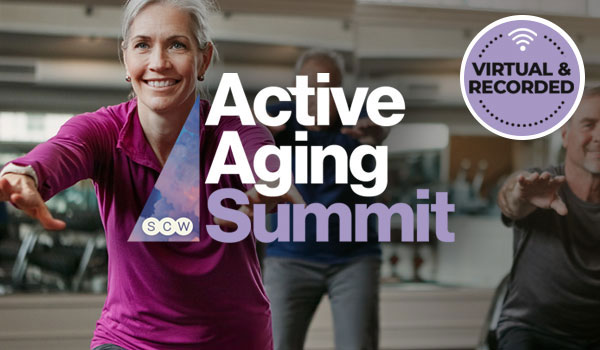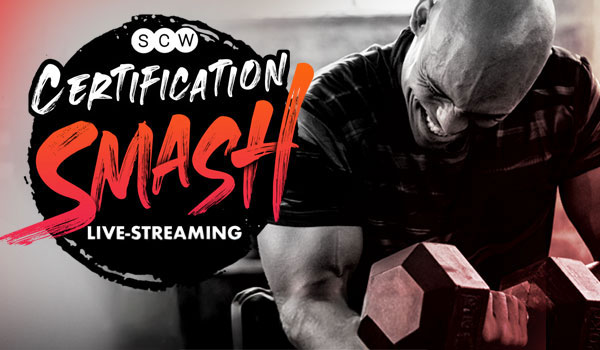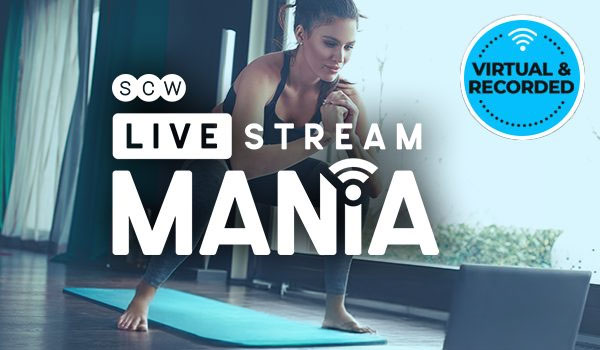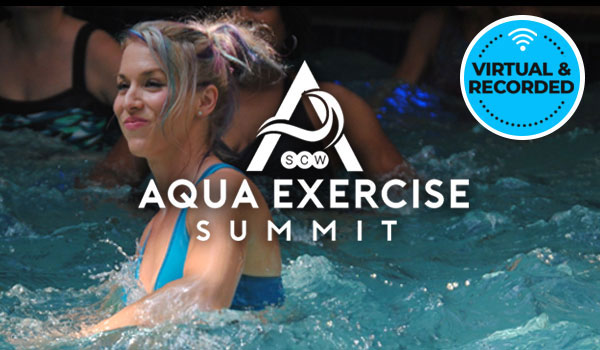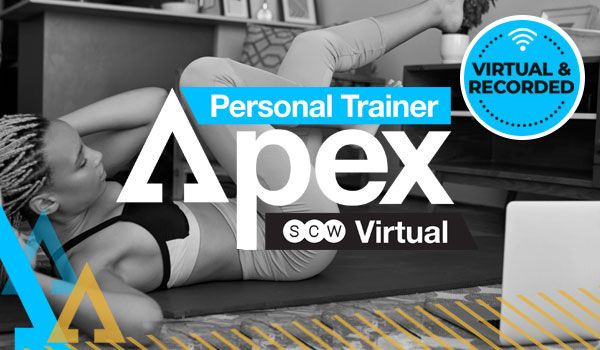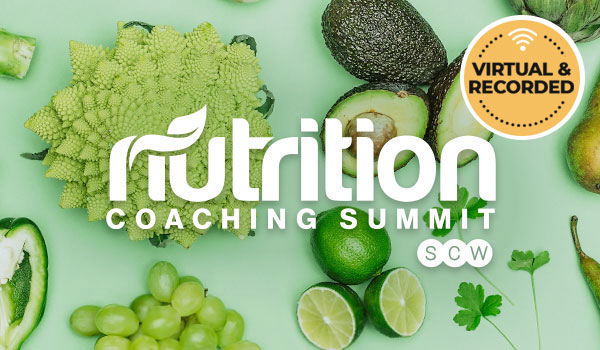
SCW Spotlite: Issue 59

The Sport of the Summer: How to Train to be a Pickleball Pro
by Sara Kooperman & Sydney Rothschild
Five years ago, I didn’t even know what pickleball was, now I play regularly. Over the past few years, pickleball has become one of the fastest growing sports in the United States. According to the Sports & Fitness Industry Association (SFIA), over 8.9 million people played pickleball across the country in 2022 which was nearly double the 4.8 million players reported in. While the game had been on the rise prior to Covid-19, the pandemic definitely helped further spread its popularity as seen in a report by the Association of Pickleball Professionals which found that more than 36.5 million people played pickleball from August 2021 to August 2022. Pickleball is a fast-paced and highly addictive sport that has taken the world by storm. The game combines elements of tennis, badminton, and Ping-Pong making it an accessible sport for players of all ages and skill sets.
Offering off court pickleball training is growing in popularity. Personal training, group exercise sessions and small group training programs are an excellent way to leverage the popularity of this sport. Connecting with your community while increasing your bottom-line revenue will grow your club membership and expand your neighborhood outreach.
Brief History of Pickleball
While only recently becoming popular, pickleball was actually invented in the summer of 1965 on Bainbridge Island, Washington, by three friends: Joel Pritchard, Bill Bell, and Barney McCallum. Using badminton paddles, a perforated plastic ball, and a modified badminton court they created the foundations of the game. Funnily enough the name took after the Pritchard family’s dog, Pickles, who had the habit of chasing after stray balls and stealing them. Throughout the process of creating the game, the three kept in mind their original purpose: creating a game that the whole family could play together. By 1967, the first permanent pickleball court was built in the backyard of Pritchard’s friend and neighbor, Bob O’Brian. Soon after a corporation was formed to protect the sport in 1972 and in 1975 the National Observer wrote the first article about Pickleball. Over time, the rules became more refined and by 1990 the sport was being played in all 50 states of the U.S.
How One Plays
 As someone who is new to the sport myself, I’m still figuring out the rules and understanding the game. For starters, pickleball is played as either singles or (more commonly) doubles. Similar to tennis, a serve starts the game which is hit diagonally crosscourt. After the serve, the ball must bounce before being returned, and then the serving team must let it bounce before hitting the ball back. This is known as the “two bounce” rule. After that, both teams can either volley the ball or play it off a bounce. However, players cannot volley in “the kitchen” which is the seven-foot service area (think the area in front of the service line in tennis) on both sides of the court. Players are able to go into the kitchen and hit a ball only once it has bounced. A typical game is played to 11 where participants must win by two. The sport is relatively easy to learn, making it welcoming to newcomers of all ages.
As someone who is new to the sport myself, I’m still figuring out the rules and understanding the game. For starters, pickleball is played as either singles or (more commonly) doubles. Similar to tennis, a serve starts the game which is hit diagonally crosscourt. After the serve, the ball must bounce before being returned, and then the serving team must let it bounce before hitting the ball back. This is known as the “two bounce” rule. After that, both teams can either volley the ball or play it off a bounce. However, players cannot volley in “the kitchen” which is the seven-foot service area (think the area in front of the service line in tennis) on both sides of the court. Players are able to go into the kitchen and hit a ball only once it has bounced. A typical game is played to 11 where participants must win by two. The sport is relatively easy to learn, making it welcoming to newcomers of all ages.
Health Benefits
Besides being a competitive and entertaining game, pickleball offers numerous health benefits. The sport is a full-body workout that incorporates elements of cardiovascular exercise, strength training, and agility. It is estimated that a single game of pickleball can burn up to 600 calories per hour, making it a great way to lose weight while being social. Pickleball is also an aerobic exercise which means it helps lung functionality, control of blood sugar levels, regulation of blood pressure, and improve cardiovascular conditioning. Pickleball is also a low-impact sport that puts less pressure on your joints and muscles. Compared to tennis courts, pickle’s 44-foot by 20-foot court enables players to not have to travel far to keep the ball in play which reduces the strain on knees, hips, and ankles. Additionally, pickleball is great for one’s heart health. In fact, a study showed that playing pickleball may lower a person’s risk of heart disease by positively changing risk factors such as cholesterol levels and blood pressure. It is also an excellent stress reliever as aerobic activities like pickleball cause the body to release endorphins (also known as feel good neurotransmitters) that help relieve stress as well as anxiety.
Strength Building Exercises
Despite the social component and health benefits of pickleball, we all know that at the end of the day we all want to crush our opponents as this is a competitive game after all! The best way to get extra power on the court is to get stronger off it through strength training exercises. Pickleball is a great workout, but it is not the most efficient way to build muscle which is why strength training is so important. There are three main benefits of strength training for pickleball players:
- Power Increasing Performance – building up muscles and one’s overall strength means you are then able to hit the ball harder. Increasing not only strength in shots but confidence on the court as well.
- Boosted Speed and Endurance – stronger muscles also can lead to faster running and more endurance to get every shot. Running and hitting become easier, enabling you to keep doing them for longer.
- Lower Risk for Injuries – strengthening muscles also strengthens bones, tendons, and ligaments which makes your joints less vulnerable to injury.
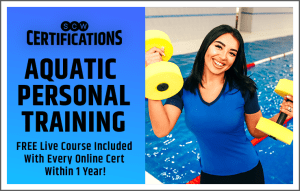
There are many ways to build strength from bodyweight exercises such as squats, push-ups, and sit-ups to gym equipment exercises that utilize dumbbells, barbells, kettlebells, or cable machines. The key to strength training is finding a routine that works for you and keeping with it as even a few simple exercises can create a huge difference in your pickleball game. Here are five of some of the best strength training exercises for pickleball players:
- Split Squats – builds leg strength to help you easily hit the lower shots that can often come at you during pickleball. This exercise uses your quadriceps, glutes, and hamstrings.
- Dumbbell Lawnmower Rows – helps strengthen back muscles and better trains your core to rotate with more strength which is helpful with turning to hit forehands and backhands in pickleball. In this exercise your quadriceps, hamstrings, and biceps will be utilized.
- Goblet Squats – strengthens your legs to help with jumping and overall movement on the court. The exercise uses your quadriceps, glutes, hamstrings, lower back muscles, abdominals, and biceps.
- Dumbbell Chest Press – Just like most racquet sports, in pickle you tend to favor one arm which can lead to strength imbalances. This exercise works to counteract and correct these bodily imbalances through the use of chest muscles, front deltoid, and triceps muscles.
- Single-Leg Deadlifts – not only does this help with balance and coordination, but also build serious leg strength. This exercise will mainly use your hamstrings as well as your gluteus maximus and gluteus medius.
Strengthening Your Core
Besides strength training, another keyway to improve your pickle skills is developing a strong and stable core. The core stretches from the pelvis to the neck and surrounds the trunk, the central part of your body that houses most internal organs. Your core muscles are crucial in generating power, maintaining balance, and enacting precise movements on the court. Incorporating these forms of exercise into your routine can improve your agility, shot accuracy, and stability during your pickleball games. A well-conditioned core not only optimizes your pickleball skills but also contributes to better balance, posture, and prevention of injury in your everyday life.
- Plank Variations: Plank exercises are most effective at engaging all of your core muscles. Using a basic forearm plank, ensure that elbows are directly under your shoulders and your body is a straight line. Hold this position for 30-60 seconds.
- Russian Twists: Russian twists are a great way to strengthen your obliques and improve rotational power which is essential for powerful shots in pickleball. Start by sitting on the floor with your knees bent and your feet lifted off the ground. Then lean back slightly while keeping your back straight. Have either a medicine ball, dumbbell, or kettlebell in your hands and rotate your torso from side to side. As you rotate, tap the weight on the ground and go for 10-15 repetitions on each side.
- Bicycle Crunches: Bicycle crunches are a staple for developing your rectus abdominal and oblique muscles, creating a stable core. Begin by lying on your back with your hands behind your head and your knees bent. Then, lift your shoulders off the ground while bringing your right elbow towards the opposite knee, extending the right leg straight. Repeat on the other side and repeat 15-20 times.
- Dead Bugs: Dead bugs improve your core
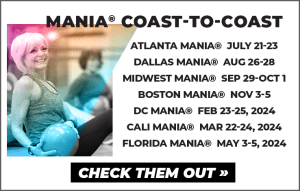 stability, coordination, and control. Start by lying flat on your back with your arms extended straight and your knees bent at a 90-degree angle. Lower your right arm above while straightening your left leg, make sure to keep them just above the ground. Return then to the beginning position and repeat on the opposing side. You should repeat this 10-12 times per side.
stability, coordination, and control. Start by lying flat on your back with your arms extended straight and your knees bent at a 90-degree angle. Lower your right arm above while straightening your left leg, make sure to keep them just above the ground. Return then to the beginning position and repeat on the opposing side. You should repeat this 10-12 times per side. - Swiss Ball Pike: The Swiss ball pike targets the entire core, including the rectus abdominis, obliques, and lower back muscles. Start in a high plank position with your feet on a Swiss ball. Engage your core and begin to lift your hips toward the ceiling, rolling the ball toward your hands. Then, pause briefly at the top and slowly lower your back into the starting position. You should aim for 8-10 repetitions, focusing on controlled movements and maintaining your balance.
- Standing Rotations: Standing rotations help to improve rotational stability and power which are essential for quick changes in direction on the pickleball court. Start with feet and shoulder-width apart and a resistance band at chest height. Engage your core and rotate your torso to one side while keeping your hips stable. Return to the starting position and repeat on the other side 12-15 times.
Conclusion
Pickleball has rapidly gained popularity as a fun and engaging sport for individuals of all ages and skill levels. With its unique combination of tennis, badminton, and ping pong, pickleball offers a dynamic and exciting experience. However, in order to become a pickleball pro it is essential to train both your overall strength and core muscles. Incorporating these exercises into your routine gradually improves your pickleball skills, enhances your performance, and reduces risk of injuries. Trainers of all types are offering growing and financially successful off-court pickleball training. So hit the court with confidence this summer, knowing that you too can excel in the sport of pickleball.
Be sure to catch this session at Midwest MANIA® 2023!
Pickleball Power & Performance
With Sara Kooperman, JD
Experience the best techniques used to train for power and performance for the ever-growing sport of Pickleball. This incredibly creative strength-focused tubing workout uses effective and manageable resistance techniques. Enhance speed, increase endurance, and decrease the risk of injury. Hit the ball harder. Chase the ball faster. Enjoy the sport longer. This pickleball press program ensures your clients will compete at the highest level.
 About the Author: Sara Kooperman, JD
About the Author: Sara Kooperman, JD
Sara Kooperman, JD, CEO of SCW Fitness Education, WATERinMOTION®, and S.E.A.T. Fitness sits on the ACSM Communication & Public Information Committee, the Gold’s Gym Think Tank, the canfitpro Advisory Panel and was a founding board member for the Women In Fitness Association (WIFA). Recently nominated for the IDEA Fitness Leader of the Year Award, Kooperman won the 2022 Most Innovating Fitness Pro by Fitness Industry Technology Council. She is also an inductee into the National Fitness Hall of Fame, an Illinois State Businesswoman of the Year, and an esteemed panelist for IHRSA’s Talks & Takes Monthly Talk Show.

What to Post When You Have
NO IDEA What to Post?
by Brandi Clark
 About the Author, Brandi Clark
About the Author, Brandi Clark
Brandi Clark is a marketing and sales mentor for those in the fitness industry. With over 25 years in the fitness industry, she has served her clients in every capacity from group instructor, personal trainer, and gym owner. She spent years as a Master Trainer educating fitness professionals through CEC courses and programs that she developed and delivered. As the CEO of Standout Fit-Pro she understands how quickly the industry changes and evolves, and she currently spends her time helping fitness professionals implement business strategies so they can stand out as a leader among their peers. Her specialty is teaching people how to create content that really connects with their audience so they can build their training business and help more people achieve lasting lifelong changes. Her methods will transform your communication on social media and deepen the bond your followers feel toward you, which shortens the time between “hello” and “enrolled”. www.standoutfitpro.com

Thriving with Arthritis: What Your Doctors May Not Tell You!
If you or your clients are among the 1 in 4 adults in the United States that have been told by their doctor that they had some form of arthritis, this article is for you! While a specialist or rheumatologist may prescribe medications and provide valuable insights into how to best manage symptoms, there are many things they may NOT be telling you. Did you know there is often a discrepancy between what you are told and the reality of this disease? There are oftentimes many additional symptoms and side-effects of an arthritis diagnosis that you should know.
First and foremost, what exactly is arthritis?
- Arthritis is the swelling and tenderness of one or more joints.
- The main symptoms are joint pain and stiffness, which typically worsen with age.
- The most common types of arthritis are osteoarthritis and rheumatoid arthritis.
- Osteoarthritis causes cartilage — the hard, slippery tissue that covers the ends of bones where they form a joint — to break down.
- Rheumatoid arthritis is a disease in which the immune system attacks the joints, beginning with the lining of joints.
After receiving a specific diagnosis, some of the most common information given to patients about arthritis is:
- It is genetic and cannot be prevented
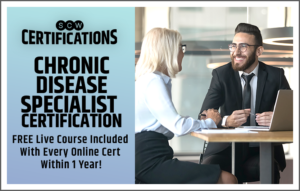
- You should limit frequency and intensity of activities
- Competitive sports are NOT a good idea
- Pain and swelling is common
- Use over the counter pain/inflammation medication
- Biologic Drugs will be a part of your lifestyle
- Losing weight can help with symptoms
- Eat an inflammatory diet and drink more water
- Avoid stress
- Sleep more
However, since there are various forms of arthritis and every BODY is affected differently, there are many symptoms that you should know. What you may not have been told to expect is that you may experience:
- Hearing loss
- People with arthritis report a number of problems with their hearing, from hearing loss to tinnitus. Evidence points to the body-wide inflammation common with various types of arthritis. Some medications are also linked to hearing problems.
- Skin Rashes and Bruising
- Redness, heat, and inflammation over joints are common symptoms, but other skin problems like rashes, discoloration, and becoming easily bruised may occur.
- Breathing Problems
- Symptoms like snoring, coughing, and other breathing problems can be caused by all kinds of diseases or infections. However, lung diseases like obstructive sleep apnea have been linked to various forms of arthritis.
- Numbness and Tingling
- Numbness, tingling, and even weakness in your arms, legs, hands, and feet is called peripheral neuropathy. This problem makes an appearance in a number of chronic conditions, including arthritis.
- Gum Disease
- A common complication in people with arthritis since the early 1900s. Gingivitis, or gum disease, in people with arthritis is often caused by the same bacteria that triggers the autoimmune inflammatory response that happens in autoimmune diseases such as RA, Lupus, Psoriatic Arthritis, and more.
- Increased Body Fat
- Decreased muscle mass is common in people with many types of chronic arthritis, and arthritis is no exception. Reduced activity due to joint inflammation and pain can lead to loss of muscle mass, as well as increases in body fat, according to a 2018 study. As this shift happens, increased body fat and lower muscle mass can add to the already significant cardiovascular risk people with RA have from the inflammation caused by the disease.
- Eye Irritation
- The body-wide inflammation that causes various forms of arthritis is NOT just limited to the joints. Your eyes can experience symptoms from this condition such as dryness, redness, and swelling can develop, and even ulcers.
- Sleep Problems
- A lot of chronic conditions lead to disrupted sleep and seem to be linked to the severity of the disease and the pain it causes. A 2014 study showed that arthritis pain can cause sleeplessness, which in turn can increase daytime sleepiness and other sleep problems.
- Cognitive, Mood, and Emotional Disturbances
- Chronic illnesses and pain have long been linked with depression. Changes in lifestyle, a loss of ability or function, and pain can all contribute to depression. A 2019 research review pointed to various forms of arthritis causing disruptions to the chemicals and neurotransmitters in the brain. Together, they can lead to emotional and mood disturbances, as well as trouble concentrating and other cognitive issues.
- Digestive Problems
- People with arthritis are about 70 percent more likely to develop gastrointestinal problems than people without the condition, according to the Arthritis Foundation. A 2019 population-based study found that roughly 20 percent of people with RA have irritable bowel syndrome, as well as other symptoms like nausea and bloating. Researchers have linked these problems to other immune-related conditions, too. These problems are likely due to a number of things, including:
- medications you’re taking
- other conditions you have alongside your disease
- Infections and autoimmune complication
- Weather Related Flares
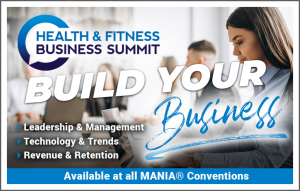
- People with various forms of arthritis are affected by the weather. The change of seasons and the sudden rise and fall of temperatures along with barometric pressure changes due to altitude changes such as flying and traveling through higher elevations can affect arthritis. In fact, there is a link between chronic pain and humid, windy days with low atmospheric pressure.
- People with arthritis are about 70 percent more likely to develop gastrointestinal problems than people without the condition, according to the Arthritis Foundation. A 2019 population-based study found that roughly 20 percent of people with RA have irritable bowel syndrome, as well as other symptoms like nausea and bloating. Researchers have linked these problems to other immune-related conditions, too. These problems are likely due to a number of things, including:
What you should also take into consideration is that inflammation is NOT limited to joints and daily exercise and movement is a MUST. When it comes to managing and reducing the onset of these symptoms, know your “triggers.” Remember that things like stress, sleep, hydration, nutrition, and medications all play a role in how your body reacts to arthritis. In addition, be sure that your family members or your support system is also aware of these potential symptoms so they can best support you. Most importantly, be kind to yourself and remember that a disease does not define you.
As a Fitness Professional, many of our clients and members may suffer with arthritis or several of the symptoms mentioned above. To learn how to work with this special population and chronic diseases, including heart disease, cancer, and diabetes, consider becoming a Chronic Disease & Fitness Specialist. This 4-hour SCW certification incorporates the basic knowledge needed to understand the most prevalent chronic diseases, symptoms, causes, and treatments to work safely and effectively with this growing demographic. Learn tools to improve client trust, decrease pain, and increase quality of life. This encompassing certification includes practical training, comprehensive manual, and online examination.
If you’re interested in becoming certified, join me on Thursday, July 20 at Atlanta MANIA®. I’ll also be leading sessions, such as “Arthritis Exercises: From head to Toe” and “The Art of Flow: Yoga Basics” throughout the 3-day event. Registration is open to over 150 workshops and lectures, the Business Summit, Expo Hall (with tons of specials), and of course not-to-miss networking with World-Renowned Expert Presenters and Fitness Pros from around the country, starting at only $119 (reg. $179.) See you in Atlanta!
 About the Author: Christine Conti, MEd
About the Author: Christine Conti, MEd
Christine Conti is the CEO of Conti Fit LLC as well as an internationally recognized chronic disease and fitness educator. She is a former investment banker and English teacher who reinvented herself after a life-altering diagnosis at age 30. Christine is a best-selling author, chronic disease advocate, speaker, and ultra-endurance athlete. She is also the creator of the SCW Chronic Disease Fitness and SCW Fall Prevention Fitness Specialist Courses.

Happy Muscles! The Key to Recovery
by Julie Zuleger, PhD
Kiss sore muscles goodbye fast? Increased flexibility? Reduced inflammation? What about those “little things” that always hurt – can I make those go away? Is all of this even possible? New research suggests active recovery could hold the answers to making us all happier human beings by helping us get rid of our daily aches and pains. This could also be the key to success when it comes to keeping your clients engaged in your classes on a daily, weekly, and monthly basis. After all, the best client is the one who comes to see you!
Exercise-induced fatigue and overtraining can pose challenges to athletes, fitness enthusiasts, and individuals who engage in physical activity. The concept of post-exercise recovery is as important as the exercise itself. This is when the body repairs damaged tissues, replenishes energy stores, and prepares for the next workout… A study published in the Journal of Sports Rehabilitation found that when combined with static stretching, active recovery via foam rolling can lead to increased improvement in flexibility and perhaps give us additional benefits above and beyond traditional methods of passive rest, icing, and just toughing it out. Increased flexibility helps to decrease the chance of injury, prevent or correct muscle imbalances, improve posture, and enhance joint range of motion. When your clients aren’t hurting, they are out playing and coming to see you more often.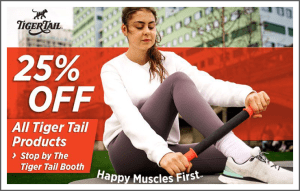
What is Active Recovery?
Active recovery is a low-intensity exercise performed immediately following intense exercise or between workout sessions. This allows the body to recover more quickly by promoting circulation and muscle relaxation. High-intensity and endurance athletes have adopted active recovery as an effective recovery method to promote circulation reduce muscle soreness, improve flexibility, mobility, and range of motion, decrease inflammation, and optimize performance. In addition, active recovery facilitates the removal of metabolic waste such as lactate which helps to reduce muscle soreness and promotes muscle restoration, moreover active recovery promotes muscle relaxation thereby reducing muscle tension and improving flexibility.
Common forms of active recovery include light jogging cycling, swimming, yoga, SMR techniques, and stretching. A popular form of active recovery is SMR or self-myofascial release. SMR can be done using a variety of tools including foam roller, hand-held foam rollers, massage balls, and handheld massage guns. Several studies have supported the benefits of SMR to promote active recovery. Hendricks et al., (2020) found that foam rolling used in conjunction with dynamic movement may reduce muscle stiffness and increase ROM. Incorporating SMR with tools into your active recovery program is beneficial.
SMR with tools can be incorporated pre-workout, intra-workout, post-workout, and on separate days as active recovery. There are several different tools that can be used. Some recommendations include The Original™ 18” Tiger Tail Foam Roller, Tiger Ball® 5.0, and The Curve Ball®.
Here are some guidelines to follow:
- Pre-activity: Warm up muscles and help prepare muscles for activity by rolling each muscle group 15 – 30 seconds.
- During activity: Roll to help relieve minor muscle problem that might feel like aches, soreness, and tightness.
- Post-activity: Roll your body roll to help prevent minor aches, soreness, and discomfort.
How to Foam Roll
- Apply about 10 pounds of pressure over muscle (+/- depending upon your needs) with your Tiger Tail tools of choice.
- Relaxing your muscles during this process will help you massage the “belly” of the muscle.
- You are the judge of how much pressure to apply. Strive for a “good hurt” from 5-7 on a scale of 1-10.
- Always follow muscle paths. Massage each muscle group 10-20 seconds. With each pass, gently press deeper into the muscle. Avoid massaging directly over bones.
- Tender muscle knots can reduce range of motion while causing aches, discomfort, and muscle fatigue. Knots come in various sizes, like a pinhead, pea, noodle, or small pickle.
- Minor discomfort or tenderness may be experienced when passing over muscle knots. To minimize knots, apply 10 seconds of firm, constant, focused strokes, for three sets.
- Recurring or stubborn muscle knots often need additional attention. Using Tiger Tail products 2-3 times a day may help speed healing. Over the course of time, muscles knots should get smaller or disappear.
Active recovery is an effective intervention in reducing muscle soreness and improving performance and also offers several advantages over passive recovery methods such as promoting circulation, reducing muscle tension, and reducing inflammation. Nonetheless athletes and coaches should make active recovery a regular part of their training program to optimize their recovery process and increase overall performance.
If you are interested in learning more about active recovery techniques incorporating SMR tools, join us at SCW Dallas MANIA®, August 26-28, 2023. Experience the Happy Muscles!® Tiger Tail® Active Recovery Method session and visit our booth to check out all the Tiger Tail® products. www.tigertailusa.com
 About the Author: Dr. Julie Zuleger
About the Author: Dr. Julie Zuleger
Dr. Julie Zuleger has over 20 years of experience as a Licensed Massage Therapist, Certified Strength and Conditioning Specialist (CSCS), Corrective Exercise Specialist, RYT-500 hr. Yoga Instructor, and Human Movement Specialist. Julie promotes self-care using massage tools and stretching-based programs and teaches continuing education courses for yoga teachers, massage therapists, athletic trainers, and strength and conditioning, fitness, and wellness professionals. Julie holds a Ph. D. in Education and is the Director of Kinesiology and Education at Tiger Tail USA. In addition, Julie teaches in the Department of Human Kinetics and Health Education at the University of Wisconsin, Oshkosh.

Technology Linking Fitness
By Lou Atkinson, BSc, MSc, PhD
EXI: Exercise Intelligence is a digital, therapeutic, and personalized physical activity program for people managing multiple health conditions, it is also the technology that bridges the gap between fitness and healthcare according to Lou Atkinson, a 25 year fitness professional and Schwinn Master Instructor. Her passion for continuing education and research continuously seeks out ways for more people to realize better health. EXI, for Lou, is a gateway introducing fitness training to medical science. It creates solutions for people who really need to get active but face many barriers.
As technology progresses, it is more common to see these new advancements built into our daily lives. In the fitness industry, we find new tech can be a huge help for everyone, from new fitness enthusiasts to coaches and personal trainers to gym owners and operators. The connectivity with apps, smart watches, equipment, and devices goes beyond the rudimentary pedometer to offer in-depth metrics, health analysis, virtual connections, and programming. We are now seeing how technology not only enhances a user’s fitness experience but also expands our reach where fitness and healthcare meet.
“The background to this is that fitness professionals have always talked about how we can contribute to the inactivity problem that we see in all developed countries,” shares Lou. Inactivity levels are known factors that can lead to disease and create health risks that only perpetuate the problem. Lou continues, “Globally, no one’s made any great advancements in addressing the inactivity problem. Obesity levels continue to rise, and we are becoming less active. We have more of an environment to keep us sedentary than ever before. Of course, this was not helped by the pandemic.” Even the most knowledgeable and passionate fitness professionals struggle to make a difference and engage with the population that could benefit most from an active lifestyle.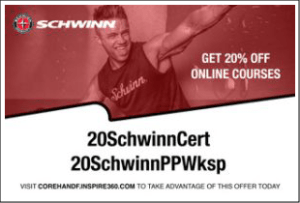
Many fitness professionals, despite their best training and intentions, feel they don’t necessarily have the qualifications or training to work with more vulnerable populations who have health conditions. Without a background in healthcare, prescribing an activity plan may seem out of the scope of many trainers’ expertise. Healthcare professionals on the other side of the fence have seen the evidence and preached the message that physical activity is going to be beneficial for their patients. Lou states, “You know, healthcare professionals are 100% on board, knowing, ‘I need to advise my patient to be more active, and I need to help them do that.’” But healthcare providers cannot create the exercise plans that exercise professionals can. Here lies the gap between fitness and healthcare, with the most vulnerable, the people with medical and mental conditions that are inactive, in the middle. There are questions on both sides: Who can I trust to help my patients? And how do I reach the more vulnerable population with fitness? Technology is the solution, and people are the bridge.
As a Schwinn Master Instructor, Lou knows education builds stronger, better trainers to be effective and expand their offerings. Continuing education is important to be able to make the best impact on a client’s life. Connected fitness solutions are tools you can use to upskill and keep pace with members. As you train to add more offerings to your portfolio, digital solutions like Wexer and connected fitness equipment like the Star Trac Virtual Bike keep members on track with their community even when they step out of their normal routine. The Virtual Bike is purpose-built to withstand the rigors of a commercial cardio floor and meet users when they’re on the road in hospitality fitness centers, if they can’t make it to the gym in multi-housing amenity centers, or when they come to their club before or after the in-person training sessions. The Star Trac Virtual Bike is the connection to maintain healthy habits regardless of fitness level. On the Star Trac Virtual Bike, a beginner will find confidence in directing their own ride and content, and the experienced rider will get the fix they need that will drive them back to class ready for the next session.
EXI is the technology that can connect a user’s activity with their fitness coach and their healthcare provider. An in-person training session, a Star Trac Virtual Bike ride, or a virtual class on the Wexer platform are all workouts that keep people active and can be tracked on EXI. Lou explains, “EXI takes the ACSM exercise programming—all of those guidelines—and automatically creates a personalized exercise plan for an individual in light of their health conditions and under the direction of their doctor. The technology does the complex part of assigning how much activity is needed and what parameters to keep.” Lou continues, “then we can take those exercise plans to fitness professionals who are really great at engaging with those individuals, monitoring progress, and providing emotional support, guiding them towards new activity goals.”
The beauty of the system is the human connection. Lou says, “Human beings are a human system, and this is pivotal to the program. That’s what makes the difference, right? It’s not just a screen; you know, you’re working with somebody who cares about you and your health.” Technology is a great resource that, when used correctly, does not eliminate the need for human interaction but instead supports it. Lou shares, “The difference is knowing that as an individual I’ve been listened to, and everything’s been customized to me to keep me safe and help me win!” All these systems—connected fitness, digital programming, and health monitoring—take people to make them work and be impactful. With smarter technology and professionals that can expertly navigate these systems, clients will gain confidence as they make achievements at a pace that is tailored for them.
 About the Author, Lou Atkinson
About the Author, Lou Atkinson
Lou Atkinson (PhD) is a Senior Master Instructor for Schwinn Cycling; training and mentoring a large team of Master Instructors across Europe and beyond. Lou is an educator and researcher in the field of Health Psychology, specialising in the science of health-related behaviour change. Her research and practice includes supporting pregnant & postnatal women to be active and manages their weight, as well as tackling other women’s health issues, weight stigma, and childhood obesity. As a coach, Lou is passionate about engaging a diverse range of people in physical activity and indoor cycling, and she is known for her motivating and empowering coaching style.

Ways to Celebrate Community & Identity
by Cady Stanton
Courtesy of AARP
For LGBTQ+ Americans and allies, Pride Month serves as an opportunity to celebrate the uniqueness of identity, to find community and to showcase resilience in the face of hate.
LGBTQ+, which stands for lesbian, gay, bisexual, transgender and queer/questioning, plus other sexual and gender minorities, is a term that includes anyone with a gender identity or sexual orientation other than cisgender or straight. Pride Month celebrates the history of the LGBTQ+ community and works to improve visibility for its members, as Black History Month, Asian American and Pacific Islander Heritage Month and Hispanic Heritage Month do for their respective communities.
 Last year largely marked a return to in-person events for Pride Month for the first time since the start of the pandemic, including trademark Pride parades in major cities, LGBTQ+-owned business fairs and remembrance events for community members lost in the past year.
Last year largely marked a return to in-person events for Pride Month for the first time since the start of the pandemic, including trademark Pride parades in major cities, LGBTQ+-owned business fairs and remembrance events for community members lost in the past year.
This year many Pride events have taken on a different tone, meant to show the strength of the community during a time of rising anti-LGBTQ+ hate and rhetoric across the country.
More than 490 anti-LGBTQ+ bills have been introduced by lawmakers in 46 states in the 2023 legislative session as of May, according to data from the American Civil Liberties Union. Research from the Williams Institute at UCLA’s School of Law looking at data from 2017 to 2019 shows “LGBT people are nine times more likely than non-LGBT people to be victims of violent hate crimes.”
But the events also come as more Americans than ever (7.1 percent) identify as LGBTQ+. By generation, 2.6 percent of boomers, 4.2 percent of Generation X and 10.5 percent of millennials self-identify as lesbian, gay, bisexual, transgender or something other than heterosexual, according to a Gallup poll based on 2021 data.
As attacks on the LGBTQ+ community see an uptick while more people are coming out about their identities, finding a reason to celebrate and share joy with other LGBTQ+ Americans and allies is more important than ever.
You don’t have to be a member of the LGBTQ+ community to appreciate Pride events! Whether you have a loved one you want to support or you want to champion LGBTQ+ Americans overall, everyone is welcome to celebrate.
Pride parades
Pride parades and marches are a signature part of Pride Month, often marked by floats from local LGBTQ+ groups, events sponsored by area businesses and even musical performances. While the various festivities across the country vary in size and theme, they all showcase how cities and towns can come together and support their LGBTQ+ residents.
In Provincetown, Massachusetts, which is known for its LGBTQ+ events year-round, an annual Pride celebration lands June 2-4, including a Pride Rally with a “Spirit of Stonewall” theme at the Provincetown Town Hall on June 3 at 4 p.m. The Stonewall Uprising that began on June 28, 1969, in New York City is part of the reason Pride Month is celebrated annually in June.
Pittsburgh’s annual festivities include a June 3 parade for its 50th year of Pride celebrations. Under the theme of “No Fear,” 2023 will mark the first time all three of the city’s major pro sports teams — baseball’s Pirates, hockey’s Penguins and football’s Steelers — are supporting the weekend’s events.
In the nation’s capital, you can watch the Capital Pride parade for free in the Logan & Dupont Circle neighborhoods of Washington, D.C., on June 10 from 3 to 7:30 p.m.
In San Francisco — where California has the largest lesbian, gay, bisexual and transgender population in the country, according to July 2021 U.S. Census data — the city’s annual Pride celebration and downtown rally is June 24-25, with the march on June 25.
In St. Louis, AARP is a sponsor of PrideFest, a two-day free festival in downtown complete with a dance stage and Grand Pride Parade on June 25 at noon. Event organizers say the goal is to showcase LGBT-friendly businesses, nonprofit organizations and community groups, and to give legislators and candidates a chance to show their support of the LGBTQ+ community. There will be an accessible viewing area at 15th and Market streets.
Learning and listening opportunities
If huge crowds aren’t your style, there are plenty of other ways to celebrate Pride Month through learning, listening and writing.
On June 16, the historic New York City Gay Men’s Chorus will perform a concert at 8 p.m., “Chasing Rainbows: The Continued Chase for Pride,” at the Center for Arts and Culture at Hostos Community College in the Bronx, New York. Tickets range from $48.40 to $78.45.
Milwaukee Film, a nonprofit arts organization, and PBS Wisconsin are hosting a free screening of the new documentary Wisconsin Pride at the Oriental Theatre in Milwaukee at 7 p.m. June 9, profiling “the historical and contemporary perspectives of LGBTQ+ Wisconsinites.” Milwaukee Film also is hosting a screening of The Rocky Horror Picture Show at 11:55 p.m. June 10 (general admission: $12; 60-plus: $10).
If golf is more your speed, Ferndale Pride in Michigan is hosting a fundraiser golf scramble at Rackham Golf Course on June 26 with a 9 a.m. tee time. Tickets are $100.
Virtual events
Can’t find an event near you? Libraries and organizations are also hosting virtual history and community events throughout June.
Wake County Public Libraries based out of Raleigh, North Carolina, is hosting a free Zoom history lesson on June 1 at 7 p.m. ET with historian Heather Leah, who will discuss the struggles and events that built Raleigh’s LGBTQ+ identity in the 1970s through the 1990s.
The Bigelow Free Public Library based in Clinton, Massachusetts, is sponsoring a free program titled “Improper Bostonians” on LGBTQ+ history in Massachusetts from the precolonial era to the 1960s on June 7 at 7 p.m. ET, also via Zoom.
For family caregivers of LGBTQ+ adults, AARP North Carolina is hosting a Zoom event June 15 at noon ET with the founders of the Behavioral Health Mind Body Academy. The event will provide education on the unique needs of LGBTQ+ loved ones and share tips on creating a supportive community to overcome health challenges.
For aspiring or active writers nationwide, AARP Oregon has partnered with The Generations Project to hold monthly social gatherings over Zoom to connect LGBTQ+ adults and allies using writing and discussion prompts — no writing experience necessary. The group’s June meeting will be June 20 from 2:30 to 3:45 p.m. PT.
What to take to Pride
Sunscreen: It’s important to protect your skin from the sun, especially if you’ll be outside for a long time.
Water: Staying hydrated is crucial, so carry a refillable water bottle.
Personal medical supplies: Carry inhaler, Band-Aids, earplugs.
Snacks: Pack some snacks, such as granola bars or fruit, to keep your energy up during the event.
Comfortable shoes: Pride events can involve a lot of walking or standing. Wear shoes you can walk in for hours.
Rainbow accessories: Show your pride by wearing some rainbow accessories such as a hat, bracelet or necklace.
Cash: Some vendors may only accept cash.
Phone charger: Bring a portable charger or extra charging cord so your phone doesn’t die.
—John-Paul Hayworth, LGBTQ+ Audience Strategy Director, AARP
Please find the original article HERE
Cady Stanton is a freelance writer based in Washington, D.C. She focuses on issues affecting the LGBTQ+ community across the United States.

Do You Need an Electrolyte Powder
It’s become a common sight at the gym. People toting giant Thermos water jugs and packets of electrolyte powder. But what’s in those powders? Which electrolytes are lost when you sweat? How much is lost? Are these products worth the cost? Sounds like a lot to digest, but a few basic rules of thumb can help you find the right hydration balance for you.
Breaking it Down
Electrolyte powders typically contain varying combinations of sodium, potassium, magnesium, and sometimes calcium. The reason we use electrolyte powders is to enhance water retention and replace electrolyte loss (mostly sodium) during exercise or hot activities. Electrolytes assist in muscular contractions, energy regulation, and maintaining fluid balance (which, among many other benefits, also keeps joints lubricated during exercise).
Sodium is widely found in our food supply and commonly consumed in high amounts thanks to the overabundance of processed foods, restaurant meals, and salty snacks. The average American consumes over 3,400 mg of sodium per day and the daily recommendation is <2,300 mg per day. There is an active debate about whether or not we should care about consuming too much sodium – but the bottom line is that we are not deficient. Potassium and magnesium are a different story. These minerals are found in fresh vegetables, fruits, nuts, seeds, and legumes. Most of us do not get enough of these valuable nutrients, but foods are better sources than most supplements. A banana, any potato product, or a glass of milk will offer more potassium than most electrolyte replacements. Magnesium is a new player in these types of products, with comparable amounts in foods and electrolyte powders, but can usually be taken more cost-effectively as a separate dietary supplement.
The Daily Reference Intake for water as set forth by the National Academies, the Institute of Medicine, and the Food and Nutrition Board recommends men strive for 100 oz or 3L of “fluids” (drinking water and beverages) per day, and women strive for 75 oz or 2.2L of fluids per day.
Keeping it Real
So, let’s put those recommendations into practical application. What size is your “carry” water bottle (gym/car/work/travel)? Next, what size is your “home” water glass? For me, my carry bottle is 26 oz and home glasses are 12 oz. I typically drink (4) home glasses per day with various meals and snacks and (2) 26-oz “carry” bottles per day. That puts me at 4 x 12 = 48 oz and 26 x 2 = 52 oz, which totals 100 oz per day. I’m easily hitting my water goals. Okay, that’s me. Now think about your average day and fluid intake. While this might seem like excess math, it’s a calculation that you only have to think through ONCE… then you can use this information to balance your hydration status for the rest of your life.
What about the “water loss” factor? We lose water in various ways:
- Exercise (1 lb of body weight loss = ~16 ounces of water/sweat loss)
- Diet (sodium, protein, alcohol, high caffeine (>500 mg per day) can contribute to water loss)
- Hot and/or humid environments
- Age (medications, lower thirst sensations, less concentrated urine)
- Disease and illness
Your total water needs are a combination of the Daily Reference Intake and replacing lost water. Those numbers can vary by the day, so it’s also important to recognize and watch for physical signs of dehydration:
- Mouth so dry it’s hard to form saliva
- Excessive thirst
- Dark urine (apple juice or darker)
- If after hot/long exercise with excessive sweating: do you have muscle cramps, contractions, or weakness?
- Weight down more than 1% of average morning weight
- Dizziness, headache, or fatigue
Hydration During and After Exercise
The general rule of thumb is that if you are exercising < 60 minutes, in moderate temperatures, with moderate sweating, you are unlikely to need an electrolyte replacement. If you exercise more than 60 minutes and/or sweat excessively and/or in high temperatures, an electrolyte powder is a good idea. However, it is easy to replenish lost water and sodium using plain water and salty foods (see Table 1) such as: pickles, beef jerky, salted sunflower seeds, pistachios, or a handful of pretzels. These types of food offer more sodium than an electrolyte beverage (plus other nutrients) and also satisfy our cravings to eat.
If you want to try an electrolyte powder, check out the table below that compares popular electrolyte products. As with many debates in nutrition, the most important factor to consider depends on your personal needs and concerns. Maybe you prefer not to use products with artificial food colorings and sweeteners and want to boost your potassium and magnesium content? Try the Ultima products! Maybe you are looking for low-carb and moderate sodium replenishment? Try the Liquid IV Multiplier. Or maybe you are an endurance athlete or doing intense exercise in the heat? Try the higher sodium product, LMNT (Watermelon Salt is a great flavor!).
Table 1 – Comparison of Electrolyte Products, Flavored Water, and High-Sodium Foods
Product | Product Type | Serving size | Carbo- hydrates | Sodium | Potassium | Magnesium | Food Coloring | Sweetener |
Gatorade Thirst Quencher | Electrolyte Drink | 20 oz | 27.5 g | 200 mg | 62.5 mg | None listed | Red 40 (Fruit Punch – flavor) | Sugar |
Propel Powder | Electrolyte Powder | 1 packet w/ 20 oz water | 0 g | 210 mg | 70 mg | None listed | None (Berry flavor) | Sucralose, Acesulfame Potassium |
Gatorlyte | Electrolyte Drink (lower sugar) | 20 oz | 14 g | 490 mg | 350 mg | 105 mg | Red 40 (Kiwi Strawberry flavor) | Sugar, Stevia |
Liquid IV Hydration Multiplier | Electrolyte Powder | 1 packet w/ 20 oz water | 11 g | 500 mg | 370 mg | None listed | None (Seaberry flavor) | Sugar, Stevia |
LMNT | Electrolyte Powder | 1 packet w/ 20 oz water | 2 g | 1000 mg | 200 mg | 60 mg | None (Watermelon Salt flavor) | Stevia |
Crystal Light | Flavored Water | 1 packet w/ 20 oz water | None listed | None listed | None listed | None listed | Red 40, Blue 1 (Raspberry Lemonade flavor) | Aspartame, Acesulfame Potassium |
Ultima Replenisher | Electrolyte Powder | 1 packet w/ 20 oz water | 0 g | 55 mg | 250 mg | 100 mg | Beet juice concentrate, beta carotene (Orange flavor) | Stevia |
Pickle | High-Sodium Food | 2 spears (40g) | 1 g | 652 mg | 90 mg | 6 mg | None | None |
The Bottom Line
The casual fitness enthusiast can usually meet their needs with plain water and a little food coordination. Water, a banana, and some salty sunflower seeds or nuts could do the trick. If food is not feasible for time, shopping, or prep purposes, then try an electrolyte powder. The most important thing? Enhanced water or not, just drink up!
 About the Author, Melanie Douglass
About the Author, Melanie Douglass
She is a published author, international presenter, group fitness instructor, and the VP of Business Development for lolo, an app development company specializing in fitness, nutrition, and music. Contact Melanie anytime! melaniedouglass@gmail.com or on social: Melanie Douglass Lee (@melaniedouglass) • Instagram photos and videos:
Looking for a New Job? SCW Can Help!
Facilities need you! Whether it’s Teachers, Trainers, Directors, or Managers, SCW’s new FREE JOB BOARD is supporting the industry’s need for qualified fitness pros.
We post openings in all three of our monthly e-newsletters: Spotlite, Health & Fitness Business News, and Tidal Waves which are emailed out to tens of thousands of fitness professionals teaching and training in all formats along with managers and directors at all fitness facilities: big box, gyms, boutique, studios, not for profits and independent centers.
Fitness Specialist
Brooksby Village Fitness & Aquatic Center – Peabody, MA
Unique opportunity to do both personal training and group exercise with a senior demographic. Wonderful work-life balance, benefits, holidays and vacation time are offered. Come work with a great team where you can motivate and keep the senior age demographic living independently and healthy!
Group Exercise Instructor
Woman’s Center for Wellness – Baton Rouge, LA
Candidate will instruct fitness classes, such as Yoga, Indoor Cycling, Aqua, Mat Pilates, Zumba, strength training, etc.
Candidate must have group exercise certification, professional liability insurance and CPR/AED required; specialty certification in Yoga, Indoor Cycling, Aqua, REFIT, HIIT, Mat Pilates, Zumba, strength training and/or circuit preferred.
Fitness Specialist
Brooksby Village – Peabody, MA
Create an appropriate exercise program, unique to the clients abilities and goals for both 1-1 and group personal training.
Knowledge of basic water chemistry testing for aquatic center and/or teaching aquatic classes.
Developing exciting group exercise classes in a safe and engaging environment.
Fitness Coordinator
Georgia Southern University – Statesboro, GA
This position develops and supervises a comprehensive group fitness program, to include small group training, and related special events.
Assistant Director, Fitness
Leonard J. Kaplan Center for Wellness – UNC Greensboro
The Assistant Director, Fitness is responsible for the overall design, management, and implementation of a comprehensive fitness program for the students, faculty, staff and UNC Greensboro community. This includes leadership of two professional positions and a graduate assistant as well as student employees.
Club Leader
Element3 Health – Chicago Heights, IL
Element 3 Health is looking for a skilled club leader to lead a club for older adults. Theses clubs include fitness, yoga, dance, and arts and crafts. This, is a unique opportunity to teach an in-person session, to actively train older adults and be responsible for your own club.
Exercise Physiologist
Woman’s Center for Wellness – Baton Rouge, LA
Conducts 1-on-1 and group training exercise sessions with cancer survivors, bone health sufferers, and other related diagnoses. Other duties include exercise testing and evaluation, and the development of appropriate exercise programs. Performs other duties assigned by department management. Must be knowledgeable of exercise standards and guidelines established by the ACSM.
 We’re always looking for great content highlighting the newest things in the world of fitness. Please submit your article directly to editor@scwfit.com for immediate consideration!
We’re always looking for great content highlighting the newest things in the world of fitness. Please submit your article directly to editor@scwfit.com for immediate consideration! Spotlite, April 9, 2025
Spotlite, January 5, 2025
Spotlite, November 11, 2024
Spotlite, September 27, 2024
Spotlite, August 31, 2024
Spotlite, July 26, 2024
Spotlite, June 22, 2024
Spotlite, May 23, 2024
Spotlite, April 26, 2024
Spotlite, March 22, 2024
Spotlite, February 19, 2024
Spotlite, January 20, 2024
Spotlite, December 21, 2023
Spotlite, November 18, 2023
Spotlite, October 22, 2023
Spotlite, September 21, 2023
Spotlite, August 19, 2023
Spotlite, July 19, 2023
Spotlite, June 19, 2023
Spotlite, May 18, 2023
Spotlite, April 21, 2023
Spotlite, March 28, 2023
Spotlite, February 18, 2023
Spotlite, January 21, 2023
Spotlite, December 16, 2022
Spotlite, November 19, 2022
Spotlite, October 22, 2022
Spotlite, September 24, 2022
Spotlite, August 23, 2022
Spotlite, July 22, 2022
Spotlite, June 20, 2022
Spotlite, May 18, 2022
Spotlite, April 20, 2022
Spotlite, March 25, 2022
Spotlite, February 17, 2022
Spotlite, January 14, 2022
Spotlite, December 17, 2021
Spotlite, November 18, 2021
Spotlite, October 25, 2021
Spotlite, September 16, 2021
Spotlite, August 9, 2021
Spotlite, July 10, 2021
Spotlite, June 8, 2021
Spotlite, May 14, 2021
Spotlite, April 30, 2021
Spotlite, March 30, 2021
Spotlite, February 23, 2021
Spotlite, January 20, 2021
Hyatt Regency Dulles
Herndon, VA
Hyatt Regency SF Airport
Burlingame, CA
Caribe Royale Orlando
Orlando, FL
May 1-4, 2025
May 2026
Grand Hyatt Atlanta Buckhead
Atlanta, GA
July 24-27, 2025
July 2026
Westin Galleria Dallas
Dallas, TX
August 21-24, 2025
August 28-30 2026
Rosemont Chicago O’Hare
Rosemont, IL
Oct. 2-5, 2025
Oct. 2-4 2026
Doubletree by Hilton
Danvers, MA
Nov. 13-16, 2025
Nov. 13-15, 2026

